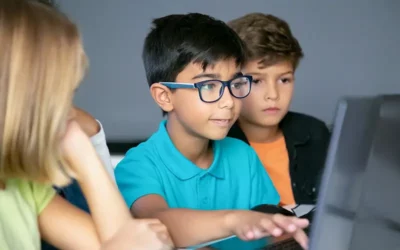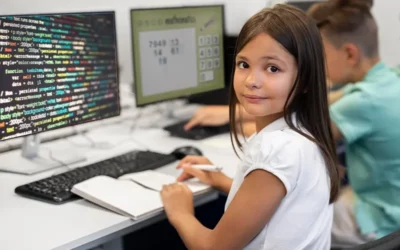Robotics classes, with their hands-on approach and educational significance, hold a pivotal role in shaping the skills of future generations. In a tech-driven era, robotics education empowers individuals to adapt, innovate, and contribute to the rapidly evolving world of automation, making it a key component of modern education. Robotics education emerges as a vital pathway, equipping learners with the skills needed to navigate and contribute to the evolving landscape.
In this blog, we unravel the world of Robotics Classes, shedding light on their purpose, the skills they cultivate, and the real-world applications they open up. From introducing students to technical concepts to fostering problem-solving abilities, these classes provide a gateway to a future where robotics and automation play a significant role across various industries.
Table of contents
Understanding Robotics Classes:
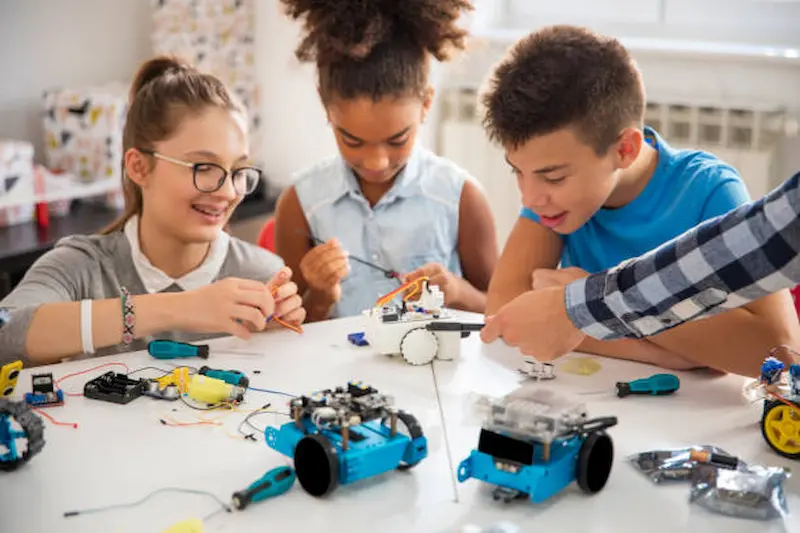
A. Definition and Purpose:
A robotics course, which can also be tailored to robotics courses for kids, is designed to instruct students on the fundamentals and real-world applications of robotics. Its main goals are to encourage creativity, problem-solving abilities, and an understanding of automation and artificial intelligence in the classroom.
Robotics education gives students the abilities they need to succeed in a technologically enhanced society, it is extremely relevant in today’s culture. It trains kids for professions in STEM, encourages creativity, and tackles current social issues.
B. Target Audience:
Students in elementary through high school are the typical participants in robotics lessons. Learners with varying backgrounds and skill levels are accommodated in these classes.
While age groups vary, the programmes are frequently made to accommodate both novices and those with previous experience, so a wide range of pupils with various educational backgrounds can access robotics instruction.
The Curriculum:
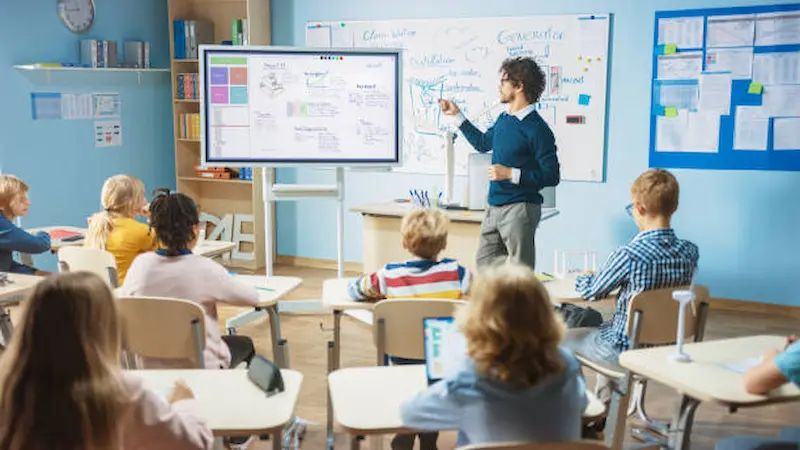
A. Basic Concepts:
In robotics classes, students, including those participating in activities for kids, are introduced to fundamental concepts such as automation, sensors, actuators, and programming. These classes provide an understanding of the functions of automation in various industries and how robots perceive and interact with the outside world.
These courses make concepts and terminology more understandable so that students can apply them to practical situations. Their journey in robotics is built on this expertise.
B. Hands-On Activities:
Robotics education is widely recognized for its experiential methodology. Pupils work on hands-on exercises and projects that include designing autonomous systems, building and programming robots, and developing automated solutions.
Creating remote-controlled drones, building line-following robots, and programming robotic arms are a few examples of the jobs. Students are better prepared for a future in the rapidly developing field of robotics by participating in these activities, which promote problem-solving, cooperation, and technical abilities.
Skill Development:
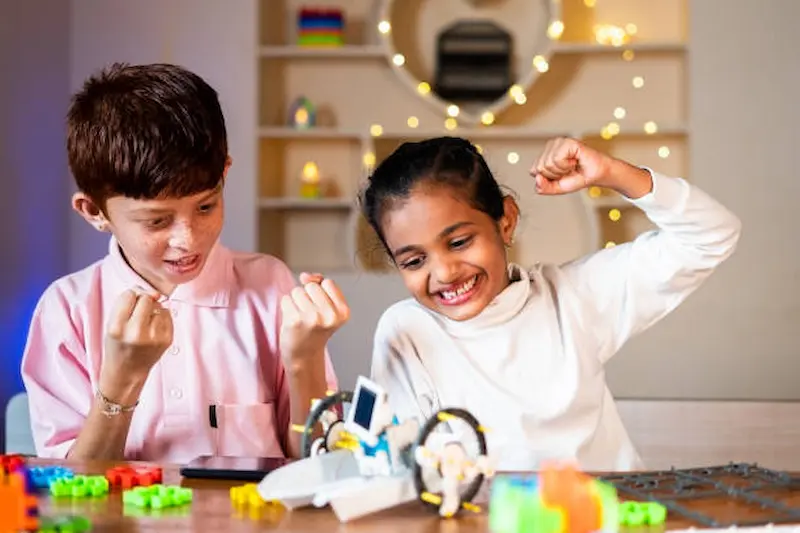
A. Technical Skills:
Robotics classes foster technical skills in students, equipping them with the ability to design, build, and program robots. They gain proficiency in using hardware components, software tools, and coding languages.
These technical skills are applicable beyond robotics, preparing students for a wide range of STEM-related disciplines, including engineering, computer science, and electronics. The hands-on experience they gain in these classes enhances their problem-solving abilities.
B. Problem-Solving Abilities:
Problem-solving lies at the core of robotics education, fostering critical thinking skills for kids and students of all ages. As they construct and program robots, they engage with complex challenges, enhancing their critical thinking, logical reasoning, and troubleshooting abilities.
These problem-solving abilities extend to everyday life, enabling students to approach a variety of issues with innovative solutions and a structured problem-solving mindset, making robotics classes a valuable asset for personal and professional growth.
Challenges and Obstacles:
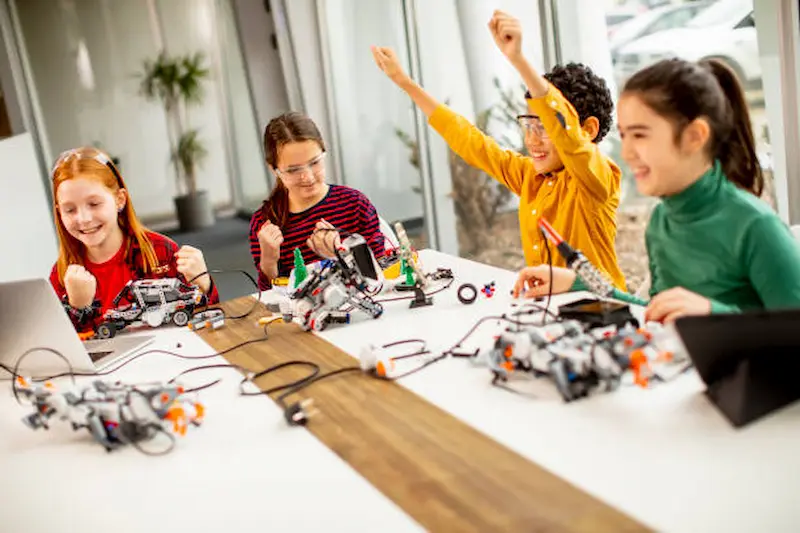
A. Technical Challenges:
Students often encounter technical hurdles in robotics classes, such as programming errors, sensor malfunctions, or mechanical issues. These challenges, akin to learning games for kids, provide valuable learning opportunities that encourage resilience and adaptability.
Robotics classes also teach essential skills in troubleshooting and debugging, equipping students to identify and resolve technical issues systematically, a skill applicable in various professional fields.
B. Teamwork and Communication:
Collaboration is a cornerstone of robotics projects. Students learn the significance of effective teamwork, combining their strengths to overcome challenges. Teamwork fosters creativity and diverse perspectives.
Robotics classes emphasize clear communication within a team, ensuring that ideas are shared, problems are discussed, and solutions are executed efficiently, a skill set vital not only in robotics but in numerous collaborative endeavors.
Real-World Applications:
A. Industry Relevance:
Robotics classes bridge the gap between education and careers by instilling skills that are highly relevant in today’s job market. Students who excel in these classes often find themselves well-prepared for professions in automation, engineering, and technology.
Robotics-related fields offer a multitude of job opportunities, from designing autonomous vehicles to developing medical robots, reflecting the increasing demand for skilled professionals with a background in robotics.
B. Innovative Projects:
Robotics classes produce innovative projects with practical applications. Examples include designing robots for search and rescue missions, creating automated manufacturing processes, and developing assistive technology for individuals with disabilities.
These projects showcase how robotics can address societal challenges, from environmental sustainability to healthcare improvements, demonstrating the immense potential of robotics education, including robotics projects for kids, to contribute to a better future by nurturing young innovators and problem solvers capable of making a positive impact on the world.
Future Prospects:
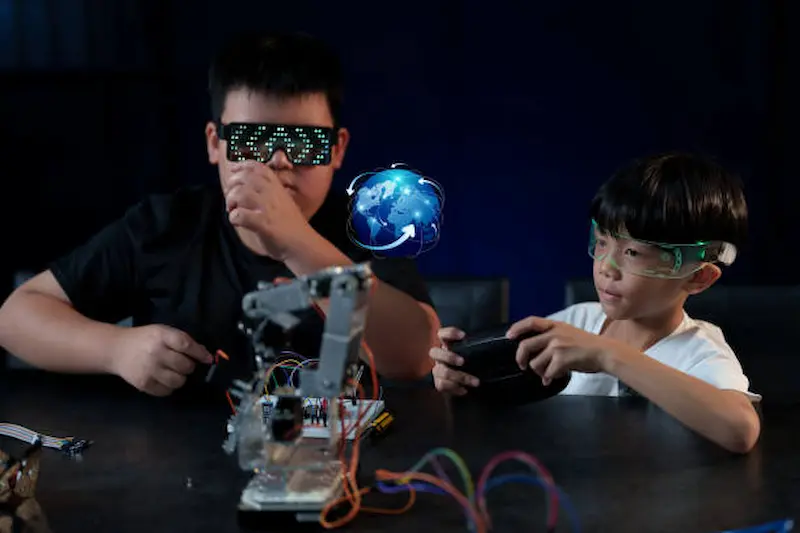
A. Advancements in Robotics:
Robotics is a dynamic field with ever-evolving trends, such as AI integration, bio-robotics, and autonomous systems. Understanding these advancements is crucial for educators and students alike, including those interested in robotics for kids, as it enables them to stay at the forefront of technology and incorporate the latest developments into their learning experiences and projects.
These developments are shaping the future of robotics education by expanding its applications and preparing students for exciting careers in fields like automation, healthcare, and space exploration.
B. Lifelong Learning:
Robotics education isn’t confined to classrooms. It encourages individuals to embrace lifelong learning, fostering adaptability in a fast-paced technological landscape.
Whether through robotics classes at schools or robotics for kids online, the opportunities to acquire essential skills and knowledge are now more accessible than ever, preparing young minds for a future where automation and technology are integral to everyday life.
Recognizing robotics as a lifelong skill empowers learners of all ages to embrace new opportunities, tackle complex challenges, and stay competitive in a world increasingly driven by automation. Enrolling in robotics classes for kids provides young learners with the perfect foundation to explore this exciting field, equipping them with the skills and confidence to thrive in a technology-focused future.
Conclusion:
A robotics class is an educational program that introduces students to the principles and practice of designing, building, and programming robots. This unique learning experience not only equips students with technical skills but also enhances problem-solving abilities, teamwork, and creativity, preparing them for a future where robotics and automation are at the forefront of innovation in various industries.
To get your hands on more such articles, educational content, and free resources on coding for kids, robotics courses, game development, etc., check out the BrightCHAMPS Blog Page now!
Frequently Asked Questions ( FAQs )
A1. The typical age group for robotics classes varies, but they’re often designed for elementary to high school students.
Q2. What skills can I expect to learn in a robotics class?
A2. In a robotics class, you can expect to learn problem-solving, programming, teamwork, and hands-on engineering skills.
Q3. Are robotics classes suitable for beginners with no prior experience?
A3. Yes, robotics classes are suitable for beginners with no prior experience, as they often start with the basics.
Q4. What equipment do I need for a robotics class?
A4. The equipment needed for a robotics class varies, but usually includes a computer, robot kits, and sensors.
Q5. What kinds of projects are typically undertaken in robotics classes?
A5. Robotics classes typically undertake projects like building and programming robots, creating autonomous vehicles, or designing automation systems.

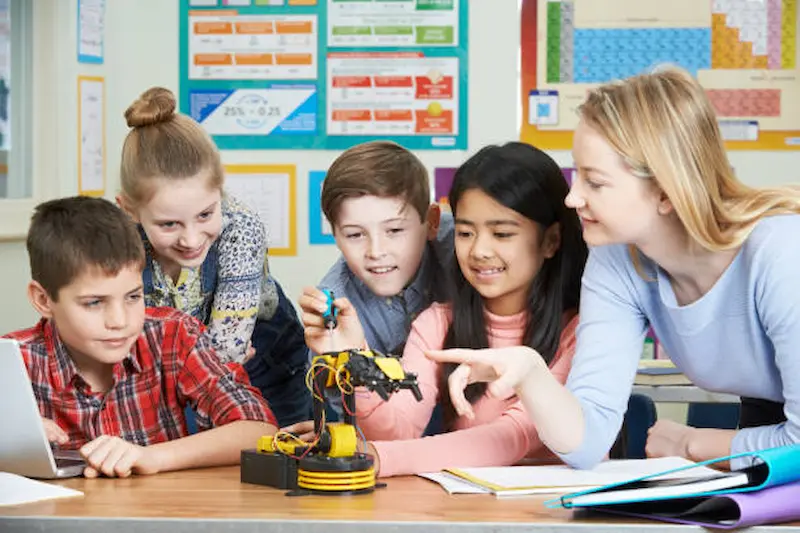
 We are an army of educators and passionate learners from BrightChamps family, committed to providing free learning resources to kids, parents & students.
We are an army of educators and passionate learners from BrightChamps family, committed to providing free learning resources to kids, parents & students.










